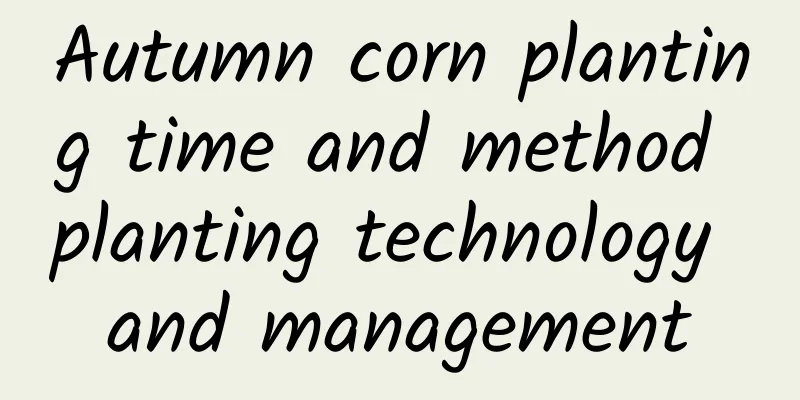How many days does it take for celery to sprout?

|
Celery is a common vegetable and is cultivated in provinces and regions in the north and south. Celery prefers a warm and sunny environment. The suitable temperature for its growth is 15-28℃. When planting celery, it is necessary to master the key points of seedling management. So, how many days does it take for celery to germinate? Let’s take a look with the editor below. 1. How many days does it take for celery to sprout? Normally, it takes about 7 to 14 days for celery seeds to germinate after being sown under suitable conditions, but this time may be affected by a variety of factors. The suitable temperature for celery seeds to germinate is 15-20℃. If the temperature is too low, the germination time may be prolonged. Soil moisture is also important for the germination of celery seeds. Soil that is too dry or too wet may affect the speed of germination. When planting celery, fresh and good quality seeds usually germinate faster, and loose, well-drained soil helps celery seeds germinate and germinate. Celery seeds should not be sown too deep. The generally recommended sowing depth is 0.5-1 cm. 2. Celery Seedling Management 1. Temperature management The minimum temperature for celery seeds to germinate is 4.5℃, the maximum temperature is 29℃, the most suitable temperature is 16-21℃, especially around 20℃. After germination, a suitable temperature should be maintained to avoid high or low temperatures that affect the growth of seedlings. During high temperatures in summer, shading measures can be taken to lower the temperature. When it is cold in winter, you can build a greenhouse or cover it with insulating materials to increase the temperature. 2. Moisture management Before germination, water thoroughly to keep the soil moist and provide sufficient moisture for seed germination. After the seedlings emerge, the soil should also be kept moist, but waterlogging should be avoided to prevent root rot of the seedlings. Watering should be done at the right time and in the right amount according to weather and soil conditions. When watering, spray evenly to avoid directly washing the seedlings to avoid damaging the root system. 3. Lighting management Celery needs proper light to photosynthesize and promote growth. After the seedlings emerge, the lighting time should be gradually increased, but avoid direct sunlight to prevent the seedlings from being burned. You can use shade nets or awnings to adjust the light intensity. 4. Thinning and weeding When the seedlings grow 2-3 true leaves, thinning should be carried out, and overcrowded seedlings should be pulled out to ensure that each seedling has enough space to grow. At the same time, weeding should be done in time to prevent weeds from competing with celery for nutrients and water. 5. Fertilization management During the growth of celery, fertilizer should be applied in a timely and appropriate amount according to its growth conditions and soil fertility. You can use decomposed and sifted organic fertilizer to mix it thoroughly with the bed soil to increase the soil nutrient content. After the celery seedling period, topdressing should be carried out according to its growth stage and fertilizer requirements, such as nitrogen fertilizer, phosphorus and calcium fertilizer, etc. The above is an introduction to how many days it takes for celery to germinate. The time from sowing to germination of celery is usually between 7 and 14 days. The management of celery after germination is crucial. It is directly related to the growth condition and final yield of celery. Growers should pay attention to it.
|
<<: How to grow carrots to get high yield?
>>: How to grow eggplant to achieve high yield?
Recommend
How often should I water Monstera in summer?
Frequency of watering Monstera in summer Monstera...
What is the best match for Hibiscus tea? Hibiscus tea pictures
1. Scented Tea Pairing 1. Chrysanthemum: When soa...
How to water the pearl spider plant
Watering tips for pearl spider plants Pearl spide...
Is deep pot suitable for blue snow flower or shallow pot?
Should I use a deep or shallow basin for blue sno...
How to grow old succulent plants? How to grow old succulent plants?
The shape of Ruolv looks a bit like a rice ear an...
Is it better to grow hanging plants in water or soil?
Is it better to grow spider plants in water or so...
Introduction to Monstera, Flower Language of Monstera
1. Family Monstera is a perennial evergreen shrub...
How to care for colorful roses
Colorful rose growth conditions The colorful rose...
A complete guide to propagate Globe amaranth!
Seed propagation Seeding is the most commonly use...
How to quickly root Chlorophytum comosum
1. Soil requirements If you want the Chlorophytum...
The language and legend of Fritillaria
The flower language of Fritillaria The flower lan...
How to propagate Coreopsis
Reproduction method In fact, Coreopsis has a stro...
Zhulan's breeding methods and precautions
1. Maintenance methods 1. Flower pot: When choosi...
Does camellia need pruning? How to prune and top it for flowering?
Camellia generally only requires light pruning. I...
Cultivation methods and precautions of weeping begonia
Cultivation method of weeping begonia Pot soil se...









